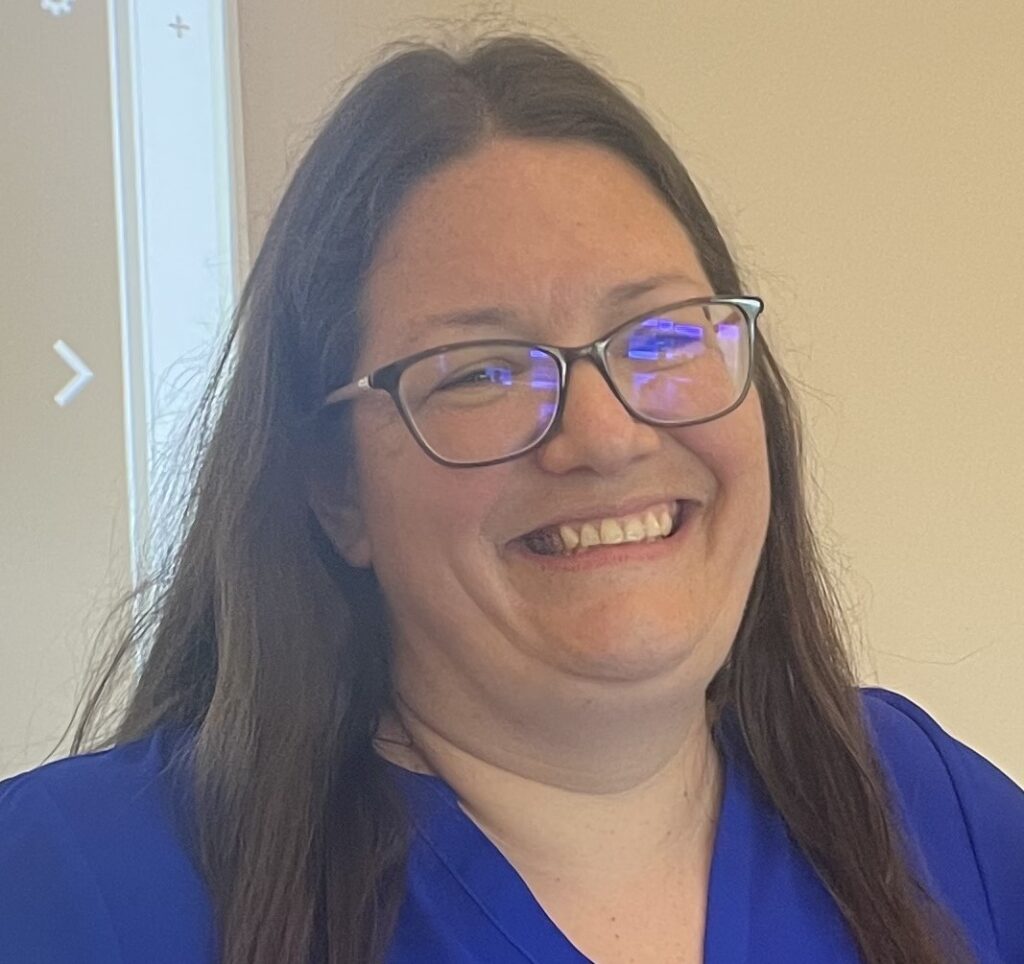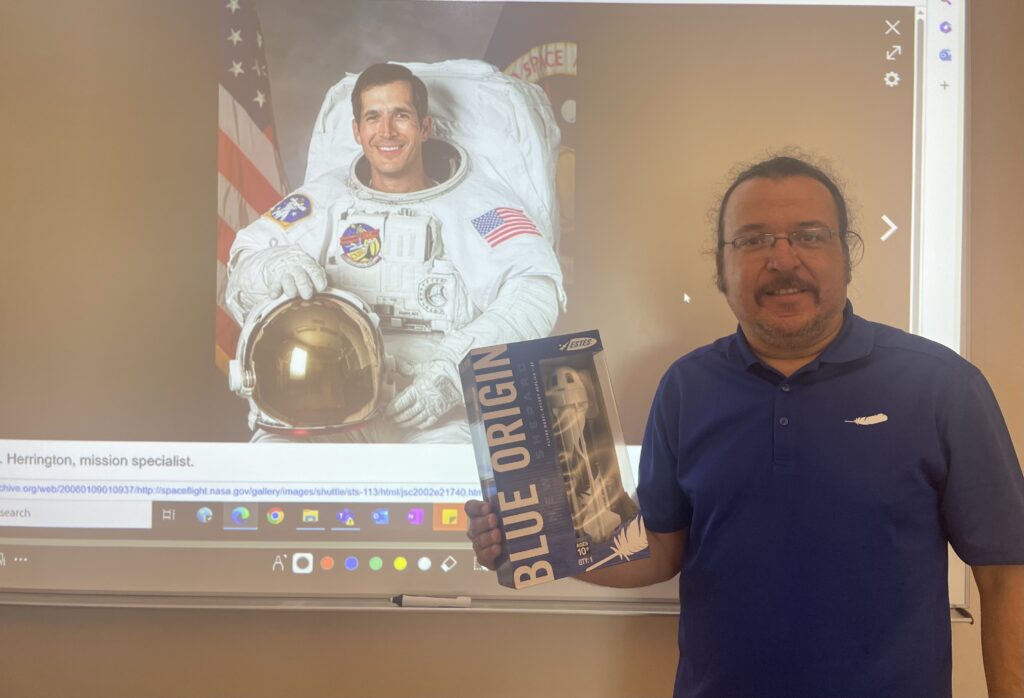
ASPIRE students work on soldering circuit boards the week of July 24-28 at United Tribes Technical College in Bismarck. Photo Credit: Alexa Azure
After staying their first night at the United Tribes Technical College, ASPIRE students spent the week of July 24-28 working on science projects at the campus Science and Technology building.
Students and staff arrived at the summer STEM program from the Mandan, Hidatsa, and Arikara, Standing Rock, Pine Ridge, Cheyenne River, and Turtle Mountain nations and represented other American Indian communities.
“I think a lot of the time, people don’t know what engineering is, they don’t realize that our ancestors were engineers, it just wasn’t called engineering,” said Azure, a citizen of Standing Rock Sioux Nation.
ASPIRE, Advanced Synergistic Program for Indigenous Research in Engineering, is a Science, Technology, Engineering and Mathematics, STEM summer camp at UTTC for American Indian students in North Dakota and South Dakota.

While some students were excited to jump right into camp, others were nervous, not knowing what to expect.
“Initially, it was really nerve-wracking,” said Tierra Rave, a 15-year-old student who attends Legacy High School in Bismarck. “But, it’s actually really fun. I made some great friends. I’m glad I came.”
In the afternoon, after students finished morning science projects, they explored additional activities with assistance from some UTTC engineering students. While they could have assembled and played battle bots, students, aged 12 to 15, eagerly gravitated to soldering projects.
Soldering is the process of joining different types of metals by melting them onto a circuit board. At camp, the students put together a small Bluetooth speaker and a video game.
When they ran into a technical issue while soldering, students sought help from Jennifer Fragua, a second-year UTTC pre-engineering student. Fragua, a citizen of the Fallon Paiute Shoshone Tribe and Jemez Pueblo, plans to take her skills in electrical engineering home to her people in Nevada. Her overall goal is to work on sustainable energy after graduation.
“When you’re actually exposed to something that is disassembled, and you actually have to put it together, when you’re soldering and making connections, going from something that is totally disassembled to a finished project – I feel like that is the most rewarding part,” Fragua said.
“Initially, it was really nerve-wracking. But, it’s actually really fun. I made some great friends. I’m glad I came.”
Tierra Rave, Legacy High School Student
For students, successfully soldering a video game or Bluetooth speaker that works is a huge accomplishment.
Fragua said ASPIRE outreach gives students the chance to explore STEM careers and different kinds of engineering. It can lead to new opportunities that won’t just benefit the kids, but also they can give back to the community.
“I feel like Indigenous communities, or reservations are always one step behind, or one generation behind everybody else,” said Fragua. But Native communities don’t have to outsource from non-Indigenous companies. “We could bring in people – our own Indigenous students and give them jobs in their community,” she said.
ASPIRE uses a “If I Can See Them, I Can Be Them” model. By bringing in Native engineers to meet and interact with the students, students are able to make connections and know that engineering is an option for them.
Alexa Azure, the engineering department chair at UTTC, funded the program through a Department of Energy grant she wrote with Turtle Mountain Community College. Now in its second year, Azure said ASPIRE organizers are successfully introducing STEM to Native students.
“We really want to focus on building relationships and for the students to have relationships with people at different institutions so that when they transfer, it’s not as lonely,” Azure said.
Mark Abotossaway, a structural engineer from Manitoulin Island in Canada, works on the New Shepard rocket at Blue Origin. He brought New Shepard model rockets for the students to build and launch outside, learning from the failure of the rocket’s first launch.

“I know it’s tough,” he said. “I understand it’s hard to imagine yourself in a career or doing something that you don’t see many of your peers or your family or your community doing, but that’s the reason why I get involved. It is possible.”
Azure wants to show Indigenous students there are a lot of opportunities for them, whether it be creating clean water, land remediation, developing technologies, disease detection, diabetes treatment – or building rockets,
“It’s really taught me anyone can do it, and it’s everywhere,” said Rave. “No matter what field of engineering you jump into, there’s always going to be something for you to do. You can really help people with engineering.”
While it might be hard for students to take that first step, students like Rave encourage others to step out of their comfort zone. “It’s a new experience that everyone can enjoy, even if you’re scared,” she said. “You just have to get out there and try it.”
Adrianna Adame
Former Indigenous Democracy Reporter
Location: Bismarck, North Dakota
See the journalist page© Buffalo's Fire. All rights reserved.
This article is not included in our Story Share & Care selection.The content may only be reproduced with permission from the Indigenous Media Freedom Alliance. Please see our content sharing guidelines.
The tree features names of missing Indigenous people
Inspired by her grandparents, Tonah Fishinghawk-Chavez proves that caring for the community is an action, not just a word
The billboard project is expanding to Oregon
Identification not yet made
Dramatic play reveals power of Indigenous stories and community







